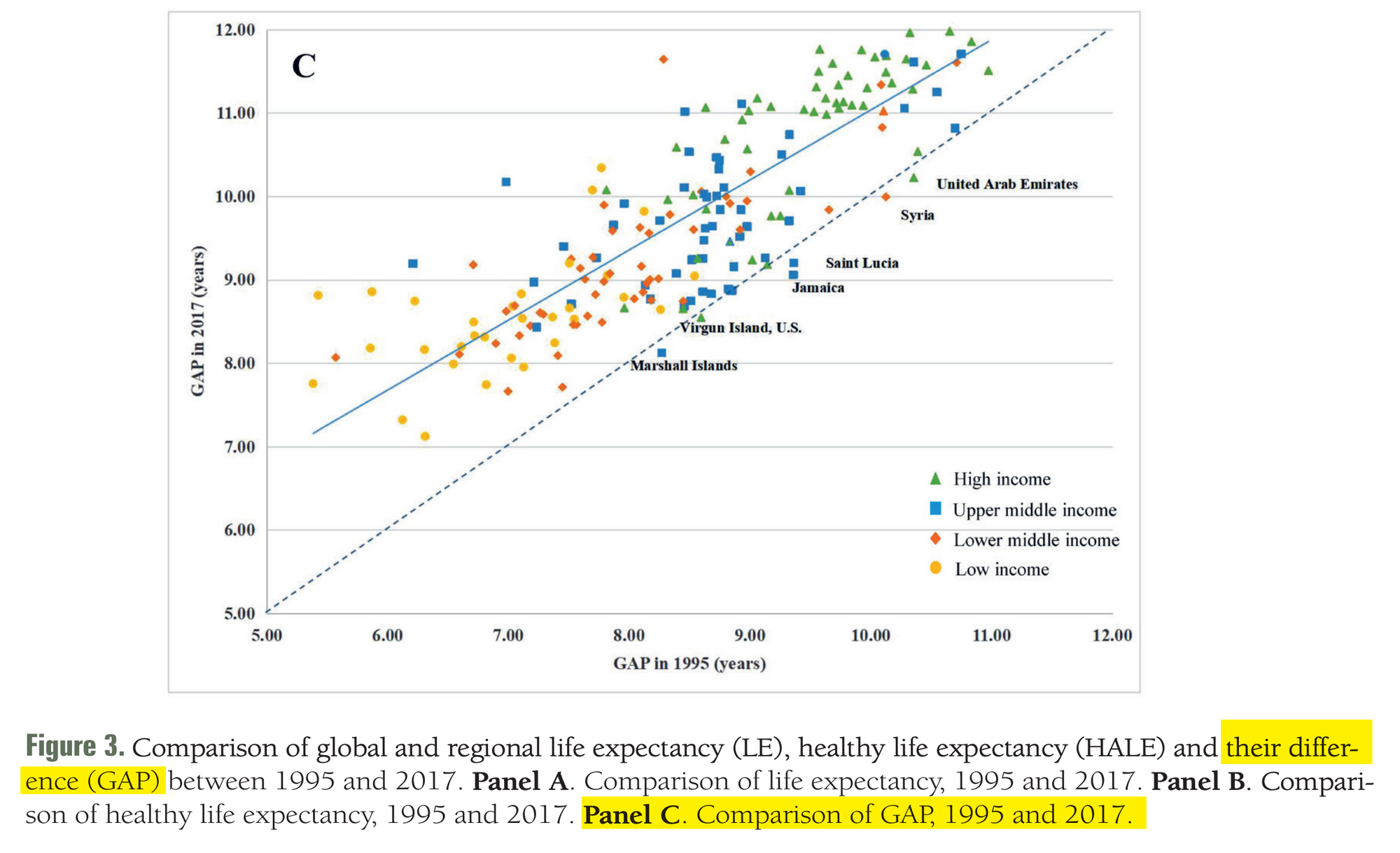We are doing an ongoing series of posts about health & fitness graphs we care about. The last one was about VO2max slack. This time we are talking about the growing gap between life expectancy and healthy life expectancy around the world.
Part 1: The Gap Between Life Expectancy and Healthy Life Expectancy
Here is the graph we'll be talking about, and it shows the growing "gap" between life expectancy and healthy life expectancy globally, as well as regionally.

Let me break it down because it can seem complicated, but it isn't. What this graph shows is the growing gap (GAP) between life expectancy (LE) and healthy life expectancy (HALE) around the world from 1995-2017. While life expectancy is growing, especially in modernizing countries, so is the gap between life expectancy and healthy life expectancy, even if that gap is growing less quickly than life expectancy itself.
It means that people are living longer but spending more of that time infirm, disabled, etc. In the worst case, you can imagine having gained a year of life expectancy but spending that entire year in ill health. GAP would go up by 1. In the best case, you would add a year and spend it all in perfect health so that GAP would stay the same. In reality, as the graph shows, we are in the middle, with life expectancy and GAP growing, albeit the latter somewhat slower than the former.
What are we to do about this?
Longevity purists might argue that a longer life is better than no life at all: at least you're not dead. This is Rosencratz's logic in Tom Stoppard's classic play Rosencrantz and Guildenstern are Dead:
Life in a box is better than no life at all, I expect. You'd have a chance, at least. You could lie there thinking, "Well, at least I'm not dead. In a minute somebody is going to bang on the lid, and tell me to come out."
The trouble is, no one is going to bang on the lid and tell you to come out. There is no magic to remove you from that infirm state.
More seriously, if you spend much time around the elderly and infirm, you will find this sort of argument even less compelling. Age-related infirmity is not fun, or a time when you focus on Stoppardian wordplay. It is often spent becoming progressively weaker, recovering from falls, in growing dementia, in and out of hospitals and care facilities, and so on. The loss of dignity alone is tragic and terrible.
Our focus should be on GAP, not merely HALE or LE. We want GAP to decline much faster than LE grows. And if LE stops growing—it has already slowed and even stopped in many regions—then the entire focus should be on GAP itself. Otherwise, as one researcher wrote, "[W]hile years are being added to our lives, life is not being added to our years".
And that is what we care about here. Not just longevity, but the gap between life expectancy and healthy life expectancy. The average American spends more than a decade towards the end of their life infirm, and it is growing. It has myriad consequences, from their own dignity and self-realization to spiraling societal healthcare costs. While immortality is not a reasonable goal outside bro science, shrinking the gap is. Let's focus on that.
Part 2: A Deeper Dive
In the second part of this post, for subscribers only, we have an AI chat "conversation" with one of the key papers in this area, and suggest some further reading for those wanting to dive deeper.
Read the full article
Sign up now to read the full article and get access to all articles for paying subscribers only.





